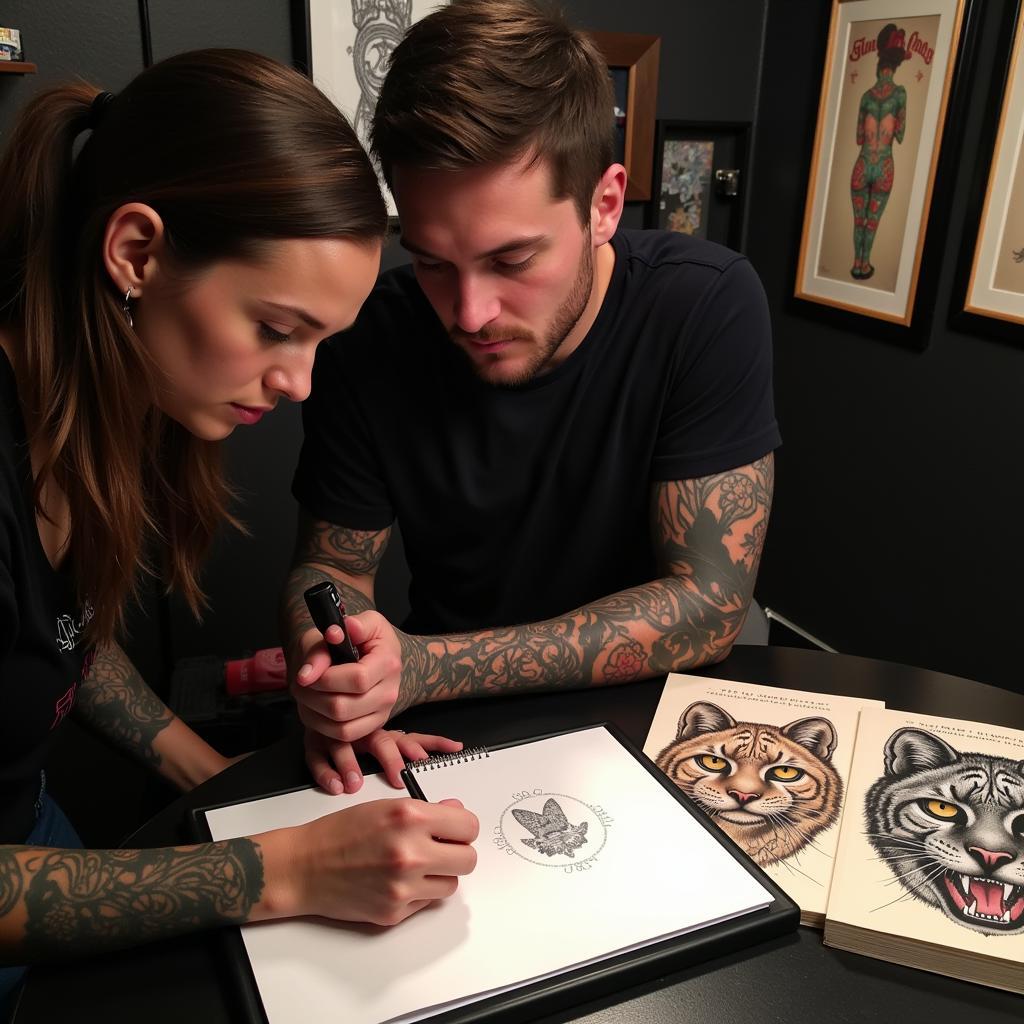Thinking about getting a tattoo covered up, maybe even with skin-colored ink? You’re not alone. Many people explore this option when they’re ready for a change. But before you jump in, let’s break down how tattoo cover-ups really work, the deal with skin-colored ink, and what you can realistically expect.
Understanding Tattoo Cover-Ups: More Than Meets the Eye
Here’s the thing: tattoo cover-ups aren’t like erasing a pencil mark. Instead of removing the old ink, artists strategically use new ink to camouflage the unwanted tattoo. This means a few factors are super important:
- The Old Tattoo: The size, shape, color saturation, and ink depth of your existing tattoo play a huge role. Dark, dense tattoos are trickier to cover than lighter, faded ones.
- Skin Tone: Everyone’s canvas is different! Your natural skin tone and how your skin holds ink will influence the cover-up process.
- The New Design: Successful cover-ups often require larger and more intricate designs than the original tattoo. This allows the artist to effectively conceal the old art.
Skin-Colored Ink: The Reality Check
Now, about that skin-colored ink… It’s not a magic eraser, unfortunately. Here’s why:
- No One-Size-Fits-All: Skin tones are incredibly diverse, and matching ink perfectly is incredibly difficult. What looks “skin-colored” on one person might look off on another.
- Tattoos Live in Layers: Tattoo ink is deposited below the surface of the skin. Trying to completely mask a tattoo with skin-colored ink often results in a blurry, discolored area that doesn’t blend naturally.
- Fading is Inevitable: Like all tattoos, skin-colored ink will fade over time. This can lead to the original tattoo becoming more visible again.
Can Skin-Colored Ink Ever Be Used?
While it’s not ideal for completely erasing a tattoo, skilled artists might use skin-colored ink strategically:
- Color Correction: Sometimes, skin-toned ink can help neutralize unwanted colors in a tattoo, making a new cover-up design more effective.
- Camouflaging Scars: If your tattoo removal left scarring, skin-colored ink can help minimize the appearance of those scars.
What Are Your Options for Tattoo Coverage?
If you’re serious about covering a tattoo, here are the most common and reliable paths:
-
Cover-Up with a New Tattoo: Working with a skilled tattoo artist experienced in cover-ups is key. They can help you brainstorm designs that incorporate the old tattoo and create something you’ll love. Can you cover a colored tattoo with black? Click here to learn more.
-
Laser Tattoo Removal: Laser technology has come a long way in removing unwanted ink. It requires multiple sessions and can be more expensive, but it’s the most effective way to completely fade a tattoo.
-
Combination Approach: Some people opt for a combination of laser tattoo removal and a cover-up tattoo. Laser treatments can lighten and break down the ink, giving the cover-up artist a better base to work with.
Making Informed Decisions About Your Ink
“Getting a tattoo is a big decision, and so is altering or covering one,” says renowned tattoo artist, Sarah Jones. “The most important thing is to consult with experienced professionals and explore all your options.”
 Tattoo Cover-Up Consultation
Tattoo Cover-Up Consultation
Remember: Patience is key! Cover-ups and removals take time, so do your research, choose a reputable artist, and be prepared for a journey.
Frequently Asked Questions
1. How much does it cost to cover up a tattoo with skin-colored ink?
The cost varies depending on the size, color, and complexity of the original tattoo, as well as the artist’s experience.
2. Will the skin-colored ink eventually fade to a different color?
Yes, all tattoo inks fade over time. Skin-colored ink can sometimes fade to a slightly different hue than your natural skin tone.
3. Is a cover-up tattoo more painful than the original tattoo?
Pain tolerance varies, but cover-up tattoos can sometimes be a bit more sensitive since the artist is working over an existing tattoo.
4. Can any tattoo be covered up?
Most tattoos can be covered up, but very dark, large, or heavily saturated tattoos might pose more significant challenges.
5. How long do I have to wait after getting a tattoo to get it covered up?
It’s crucial to allow your tattoo to heal completely before considering a cover-up. This usually takes several months.
Need More Information?
For any questions or for personalized advice, please reach out to us:
Phone Number: 0373298888
Email: [email protected]
Address: 86 Cầu Giấy, Hà Nội
Our dedicated customer service team is available 24/7 to assist you.
